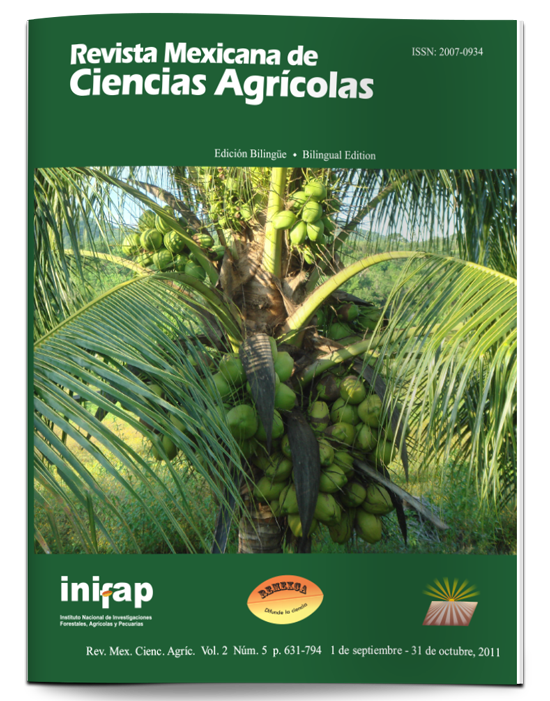LEAF LAMINA ANATOMY OF EIGHT AVOCADO CULTIVARS
DOI:
https://doi.org/10.29312/remexca.v2i5.1621Keywords:
Persea americana Mill., cuticle, epidermis, palisade parenchymaAbstract
Currently in the world, there are breeding programs in avocado, aiming to obtain new cultivars and rootstocks to increase productivity and stress-related problems on the soil. In the case of ‘Lamb Hass’; characteristics in leaves have been found such as increased CO2 assimilation rate and persea mite resistance. These features can be directly related to the leaf anatomy. It is important to know these features in current and new cultivars: ‘Hass’, ‘Reed’, ‘Gwen’, ‘GEM’, ‘Lamb Hass’, ‘Harvest’, BL667 (‘Nobel’) and BL516 (‘Marvel’). During 2007 in Chapingo, Mexico, transverse sections of leaf blades were performed, evaluating anatomical features. There were found variables with no differences between cultivars, which may be because all genotypes used in this study except ‘Reed’, come from a common ancestor ‘Hass’. The cultivars groupings are possible according to the anatomical characteristics of its leaf blade, where, there is a variation that can be interpreted from the physiological aspect and its likenesses by their ancestry. ‘Gwen’, ‘Hass’, ‘Marvel’ and ‘GEMʼ had a wider cuticle and less wide palisade parenchyma cells, while ‘Reed’, ‘Nobel’ and ‘Lamb Hass’, had contrasting features, ‘Harvest’had intermediate values. The ‘Lamb Hass’ cultivar presented a leaf blade anatomy with features that allow it to carry out photosynthesis more efficiently, due to the higher values of its palisade parenchyma I.
Downloads
Downloads
Published
How to Cite
Issue
Section
License
The authors who publish in Revista Mexicana de Ciencias Agrícolas accept the following conditions:
In accordance with copyright laws, Revista Mexicana de Ciencias Agrícolas recognizes and respects the authors’ moral right and ownership of property rights which will be transferred to the journal for dissemination in open access. Invariably, all the authors have to sign a letter of transfer of property rights and of originality of the article to Instituto Nacional de Investigaciones Forestales, Agrícolas y Pecuarias (INIFAP) [National Institute of Forestry, Agricultural and Livestock Research]. The author(s) must pay a fee for the reception of articles before proceeding to editorial review.
All the texts published by Revista Mexicana de Ciencias Agrícolas —with no exception— are distributed under a Creative Commons License Attribution-NonCommercial 4.0 International (CC BY-NC 4.0), which allows third parties to use the publication as long as the work’s authorship and its first publication in this journal are mentioned.
The author(s) can enter into independent and additional contractual agreements for the nonexclusive distribution of the version of the article published in Revista Mexicana de Ciencias Agrícolas (for example include it into an institutional repository or publish it in a book) as long as it is clearly and explicitly indicated that the work was published for the first time in Revista Mexicana de Ciencias Agrícolas.
For all the above, the authors shall send the Letter-transfer of Property Rights for the first publication duly filled in and signed by the author(s). This form must be sent as a PDF file to: revista_atm@yahoo.com.mx; cienciasagricola@inifap.gob.mx; remexca2017@gmail.
This work is licensed under a Creative Commons Attribution-Noncommercial 4.0 International license.



